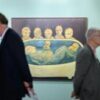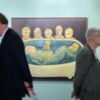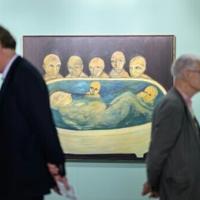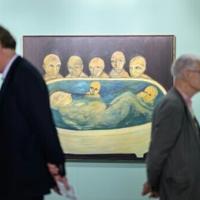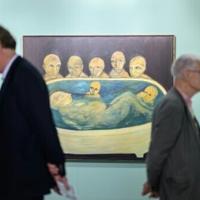The Big Picture is excerpted from The Asia Pivot, Artnet Pro’s biweekly members-only newsletter providing mission-critical analysis, insights, and exclusive intelligence on developments in Asia’s art markets, with a focus on business opportunities and challenges. Subscribe here to receive it directly to your inbox.
Amid a crackdown on dissent and global economic turmoil, Hong Kong’s status as a hub for international trade has been in doubt in recent years. And the bad news just keeps coming.
As the U.S.-China trade war escalates, U.S. President Donald Trump has included Hong Kong in the definition of “products of Chinese origin,” despite protests from the city’s government. It remains unclear exactly how this will affect art, but in the past week, some shipping companies are said to have been quietly exited Hong Kong to avoid getting caught in the growing tensions between Washington and Beijing, according to Reuters. Even Hong Kong’s richest man Li Ka-shing cannot escape from getting caught in between the rivals of two world powers as his empire warned of geopolitical risks’s impact on global trade amid controversial Panama canal ports deal.
The Hong Kong art world is also under pressure. Following the cancellation of Photofair, Digital Art Fair called off its March edition, having failed to secure funding from the local government’s Mega Arts and Cultural Events Fund, which backs Art Basel Hong Kong and Art Central. West Kowloon Cultural District, home to M+ and the Palace Museum, is expecting a HK$1 billion ($128.7 million) deficit in this fiscal year.
China’s art market does not have a lot of positive news to offer, either. Amid an economic slowdown, Chinese artists took a beating in 2024, Artnet’s Katya Kazakina previously reported. Total auction sales in China (including Hong Kong) shrank by 46.1 percent in 2024 to $1.9 billion, down from 2023’s $3.49 billion, according to the Artnet Price Database. More details are in a story by my colleague Margaret Carrigan in Artnet’s latest Intelligence Report: The Year Ahead 2025, which published this week.
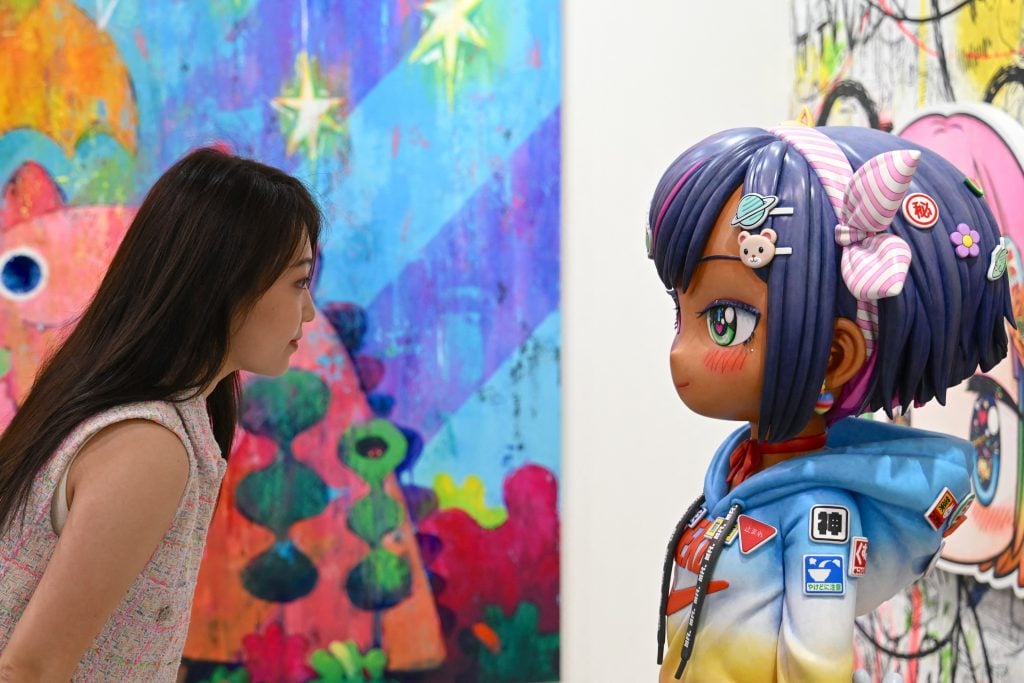
A visitor looks at works by Japanese artist Kaikai Keikei at Art Basel in Hong Kong on March 28, 2024. Photo: Peter PARKS / AFP via Getty Images.
The gloomy news has created a great deal of anxiety ahead of the latest edition of Art Basel Hong Kong, which opens to VIPs on March 26, as well as major spring art auctions held throughout the week.
When Hong Kong was under strict lockdown during the pandemic, cities around the region, including Seoul and Singapore, began to cultivate their local and regional markets in a bid to compete with Hong Kong. Asia’s art market has since become a lot more fragmented, with multiple regional hubs and the emergence of a fresh cohort of collectors, dealers, and foundations. Artists from many nations are gaining traction internationally.
However, five years from the start of the pandemic, none of these cities has yet to replace Hong Kong, according to multiple dealers I spoke with. Some who participated in fairs in other Asian cities over the past few years left disappointed. Hong Kong remains the main marketplace for high-value works in Asia, and many dealers rely on the Hong Kong fair week for business and exposure. They are not alone. For the first time, Christie’s has timed its 20th-/21st-century sales to coincide with Basel. Sotheby’s will also host its Modern and Contemporary sales towards the end of the week.
Dealer and collector Carl Kostyál, who has galleries in London, Stockholm, and Milan, told me that, after visiting mainland China and Hong Kong for the first time in 2006, he developed a strong interest in the country and began collecting works by major Chinese contemporary artists. He’s opening a location in Hong Kong’s Wong Chuk Hang area this month. The investment makes sense because he’s been working with East Asian artists for 15 years. The gallery is also collaborating with collectors from Hong Kong and Shenzhen on projects in the region, he added.
Although the market has cooled and collectors are buying at lower price points than they once did, they are still active, and they are looking for works that are fresh and less overtly commercial, said Willem Molesworth, a co-founder of the Hong Kong gallery PHD Group and Supper Club, a Basel satellite that bills itself as a fair alternative. He is expecting major collectors from the region, as well as international institutional VIPs, to visit the city during Basel.
“Hong Kong remains the meeting place for much of Asia, which is a very large region,” Molesworth said. “No other city can compare to it.”
A version of this article was published on March 12, 2025 in The Asia Pivot.
This post was originally published on this site be sure to check out more of their content

